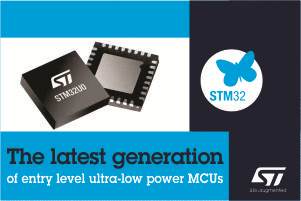The recent advances in LED lighting technology are spawning a new industry of almost unlimited potential. In ten years it cer tainly will be the dominant lighting source but the strong market can not be expect before 2012/2013. Before this application will achieve a major breakthrough, the LED technology has to overcome cer tain technological hurdles.
Days have gone when LEDs were used in applications such as forming numbers on digital clocks, lighting cell phones, traffic lights, and large outdoor television screens .
Reduction in the price of semiconductor materials has made use of LEDs possible for everyday home applications, thereby inviting energy-efficient lighting options.
Till date, we have been used to five basic types of lighting: incandescent, fluorescent, high intensity discharge, low pressure sodium and compact fluorescent lamp (CFL). Compact fluorescent lamps (CFLs) were considered till date to be the most significant lighting devices for homes but these lights are sensitive to the fluctuation and inconsistent power supply in India. On the other hand, LEDs are rugged, sustains power surges, shocks and vibrations. They are easy to install and have long span of life.LED lighting, besides lower power consumption, reduces the worlds carbon footprint and are easily recyclable – thus considerate to be absolute green technology.
With all of these ideas in mind, LEDs do show a promising future in the world of lighting. With improvements in technology, it may be possible to incorporate these lights into almost all lighting applications.
Fluorescent is obsolete
To date, the preferred “eco bulbs” have been fluorescent lights, either in tube form or as compact fluorescent (CF) replacements for bayonet or screw-in bulbs.
However fluorescent lamps have many serious problems. First, they are a health hazard. They contain hazardous materials such as mercury and they emit significant doses of ultra-violet rays which can cause cancer and eye damage.
While they are much more energy-efficient and longer lasting than incandescent lamps, their light output diminishes fairly rapidly and constantly over their lifetime, typically 10,000 hours. Safe disposal of fluorescent tunes or eco-bulbs presents its own environmental problems.
The industry
In recent years light-emitting diode (LED) technology, also known as solid state lighting, has advanced rapidly. White LEDs are now being used in general lighting applications. The best LED lighting is now similar to fluorescent in terms of efficacy (light output per watt input) but they have numerous advantages.
LEDs are still far more expensive than fluorescent lighting based on initial cost, however the longer life means significant long-term savings when replacement cost is factored in. Typical payback period is now 2-3 years, falling rapidly as energy prices increase and LED costs decrease.
The major lighting companies such as Philips and Osram have invested heavily in LED technology and a range of LED lighting products are already commercially available.
The manufacturing industry comprises two main segments: LEDs — the semiconductor components which generate the light and Luminaires — complete fittings containing one or more LEDs, power supplies to convert mains electricity to the voltage required by the LEDs, and a suitable housing.
Luminaires are now available for the whole range of applications ranging from desk lamps through to street lights. Given the present high capital cost of LED lighting, the most profitable application to date has been in industrial or public lighting infrastructure where reduced maintenance cost combined with massive energy savings result in payback periods of as little as 1-2 years, after which dramatic savings accrue.
Street lighting is already being upgraded to LED in some cities. In China, the main motivation is electricity shortages which lead to regular blackouts. In the USA, the cost of running street lights is a major burden on the public purse. Cities which have switched to LED streetlights have already reported reduced costs. An important side effect is that the light from the LEDs is similar to daylight which improves visibility and that means better personal safety and reduced car accidents.
Market growth
The solid state lighting device market is projected to grow at a CAGR of 33% for the next few years. The vast market combined with the small number of manufacturers at present means there is scope for massive growth in coming years. Given the vast number of lights to be replaced world-wide, demand will outstrip supply for the foreseeable future.
In addition, LED lights make it possible to install lights where conventional lighting was not previously feasible. For example, solar powered public lighting can be installed where there is no electricity at all. They are also perfect for expanding lighting in situations where the available electricity is already stretched to the limit.
Asia is the biggest producer and consumer of LED lighting. China has named energy efficient lighting as a top priority towards emission reduction. As the suppliers of 80% of the world’s lighting products, China will be driving global changes in lighting technology.
Some major Asian device manufacturers including Everlight, Epistar, Bright, Toyoda Gosei, Semco, and Seoul Semiconductor are strongly challengingthe dominance of lighting market leaders such as
Philips and Osram.
LED Applications in India
LED market in India is completely import-dependent. Big corporates such as Usha Shriram Ltd, Philips, GE, Osram, and so on are either active or venturing into this market. All these companies are importing their complete LED product portfolio. Usha Shriram Ltd. has claimed to sell LED range at more compelling rates than the compact fluorescent lamp (CFL) range. Other than imports, multinational companies rely on getting the LED products designed and manufactured by smaller companies.
Many big Japanese companies have their presence in the market, Chinese and Korean companies have also ventured into market recently. With so many new local start-ups in the sector, many foreign companies are looking for designing and technical tie-ups.
Taking a view of lighting technologies before four to five years, LED lighting had applications only for the niche markets such as exit signs, architectural lighting, decorative lighting, and entertainment lighting, many of which used to be colorful red, green, and blue LEDs.
Technology advancement in LEDs has open doors for applications such as consumer portable lighting (flashlights, headlamps) solar landscape lighting, retail display lighting, commercial and industrial lighting, and outdoor area lighting. These advanced LEDs available in the market have longer lifetimes with unbreakable plastic bulbs, which are weatherproof and UV-resistant. These LEDs are highly energy-efficient light sources and reduce the total cost of ownership.
LEDs have been used mostly in architectural and commercial applications. With advancements in technology, prices of LEDs have come down. Manufacturers are currently targeting their products for more home and office applications. The use of LEDs in luxury apartments and villas for decorative purposes is quite visible in the Indian market. LED manufacturers are clustering many small LED bulbs together in a single casing to increase the brightness of the light and making them the main lighting source in the home.
Why LEDs?
Customers perceive LEDs to be very costly, due to its upfront high price. The total cost of owning an LED is significantly low in comparison to owning an incandescent bulb. The cost of owning a bulb is approximately four times higher than an LED, due to high consumption of electricity. LEDs use a high percent of electricity for directly generating light.
The LED lighting market is still at a nascent stage in India. Increase in awareness, reduction in prices, increase in applications, rural push, and growing competition are expected to drive the growth of this market.
Why LED is the Future in India?
LED bulbs are expected to take the major marketshare from incandescent bulbs and CFLs. Most of the lighting companies present in India expect around 50 percent of the revenues from LEDs in the next ten years. The Indian market is highly driven by value for money. Offerings in the future are likely to be toward providing better quality and durability at low prices. More technological advancements are expected to result in ? energy efficiency. The organic LEDs are likely to have more importance in the future, which can be made as thin, flexible, and translucent as paper and can be used in any shape. Global markets are witnessing lots of regulation against incandescent lamps. Australia, the United States, and EU have already taken steps to ban this technology. Regulations on a similar platform are also expected to be witnessed in India, which will give a boost to the LED lighting market.
COMPANY PROFILES
Lucifer Lights
Lucifer Lights Ltd. is a professionally managed company engaged in the manufacture and export of LED based lights for various applications. Products exemplify Quality, Technology, Innovation and Service. They have an annual manufacturing capacity of 15,00,000 units of lights for various applications. Lucifer Lights always conducts its business on the principles of ‘Sincerity, efficiency, excellence and innovation’ to continue delivering robust, reliable, energy saving lighting.
Contact Details: 15,Shree Krishna CHS, Opp. Prince Mangal Karyalaya, Near Apasara Theatre,
Pune -411037. Tel. No.: 020 – 26455525/26 Email: info@ledindia.com Website: www.ledindia.com
FLEXITRON
FLEXITRON Bangalore a company founded by Mr.R.S.Hiremath , is one of the major players in the field of LED lighting. FLEXITRON has invested over Rs.9 Million on R&D and developments. Products ranging from simple lamps to home-lights are offered. Specific features of FLEXITRON LED products are using very high quality LED emitters from Seoul Semicon, Nichia, and CREE.
Contact Details: 1234, 22A Main, 11A Cross, Sector-1,HSR Layout, Bangalore-560102 Ph: 080-25721284 , 09845113109 E-mail : flexitron@yahoo.com.
Glaciatech Inc.
GlacialTech Inc., is a diversified provider of cooling, power supply, PC enclosure solutions for the consumer and industrial applications. Having established strong relationships with LED semiconductor Co.’s, thermal, SMPS and mechanism technology leaders worldwide, GlacialTech leverages world-class engineering, efficient manufacturing and highest-quality materials to provide high brightness, low power LED lighting solutions for indoor, outdoor and other customized applications under the GlacialLight brand.
For more information visit: www.GlacialLight.com
Havells India Ltd.
Havells India Ltd, a US$1 billion plus company and one of the largest and fastest growing electrical and lighting companies in the world, has introduced a range of revolutionary products in the Light-emitting-Diodes (LED) Market. LED is the future lighting source in India and are at the forefront of technological innovations. ‘Endura Lite’, the Havells LED Range consists of consumer lighting, street lighting and lamps.
Contact Details: 2-D, Sec 126, Expressway, Noida – 201304 (UP), India. Tel:+91-1204771000 Web: www.havells.com









